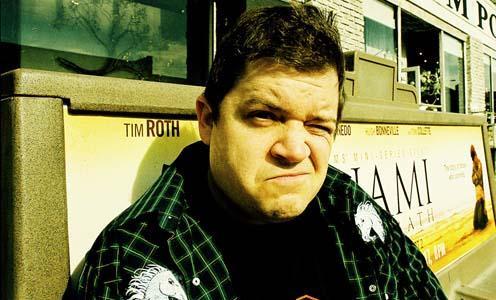The above link is from John K's blog (cartoonist and creator of Ren & Stimpy) about storytelling in comics and cartoons. I think this can be directly applied to creating characters and stories in live action films as well. All you have to do is replace a lot of phrases and jargon - like "on-model" into "formulaic script", or "poses" into "dialog and action".
The basic thing to take from this is to not to write stories simply from an abstract concept, setting, or style. If that's all you give yourself to work with, then that's all you have in your film. When you just focus on that the entire time, all you end up with is a neat chase sequence, or a film with a lot of guns firing in slow motion, or a great-looking 3D landscape, or what have you. Nobody will remember your film beyond that. Some kind of context is what makes an audience really connect to and remember a film. Characters are memorable because of their motivations - wants and needs - and not necessarily their appearances or quirks.
I honestly couldn't tell you what the hell this was about.
SHAKESPEARE PROCEDURE began as a concept film. "A film about brain transplants". Not much else It was like that through a lot of the pre-production. It was like that through production. Granted, there were vague ideas of what the characters wanted, but it wasn't really made clear, even in the editing. It wasn't apparent to me until I screened it with Mark and Ula.
A lot of the jokes fell flat in the screenings with the professors (I think the above blog link could apply to joke-telling as well) They were mostly trying to figure out why the characters were doing what they were doing. I forgot the cardinal rule of storytelling, is that your characters have to want and/or need something in order for an audience to know what the hell you're trying to show them. And on top of that, it needs to be CLEAR. Then, through their experience, you can understand what the filmmaker/storyteller is trying to say.
This guy has a distinct way of telling jokes through stories. He contextualizes them so we can connect and invest our emotions. And then we laugh. Hard.
I'm lucky to have a potential solution (voice-over narration) that may at least be a step in the right direction to make my characters' motivations much clearer, thus making them stand out and relatable. And perhaps it may even make the jokes just a teensy bit funnier.
We'll see at the rough cut screening tonight at Film Club!



No comments:
Post a Comment